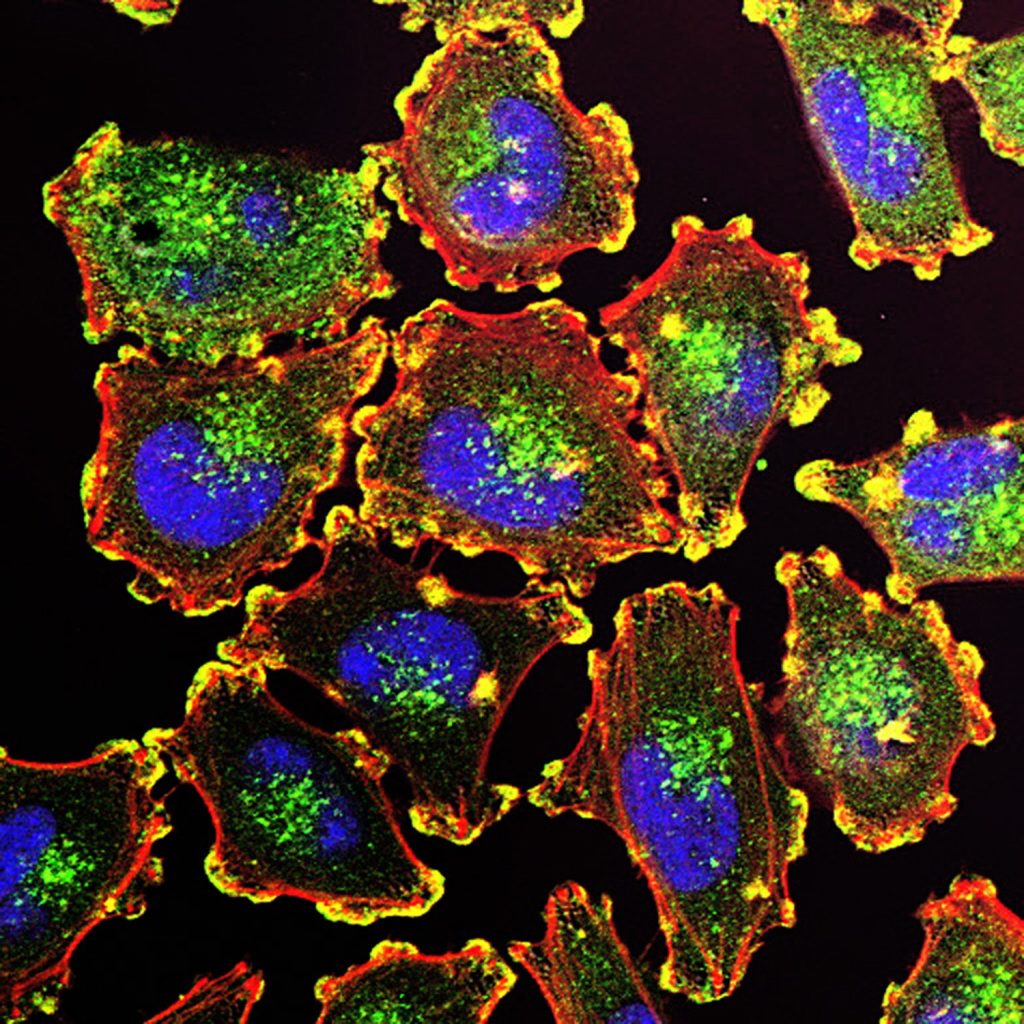
Moles and melanomas are both skin tumours that come from melanocytes. Moles are usually harmless, while melanomas are cancerous and often deadly without treatment. A study published in eLife Magazine explains how common moles and melanomas form and why sometimes moles turn into melanoma.
Melanocytes produce melanin that protects the skin against UV radiation. Specific changes to the DNA sequence of melanocytes, called BRAF gene mutations, are found in over 75% of moles. The same change is also found in 50% of melanomas and is common in lung, colon and other cancers. It was thought that when melanocytes only have the BRAFV600E mutation the cell stops dividing, resulting in a mole. When melanocytes have other mutations with BRAFV600E, they divide uncontrollably, turning into melanoma. This model is called ‘oncogene-induced senescence’.
“A number of studies have challenged this model in recent years,” said Robert Judson-Torres, PhD, Huntsman Cancer Institute (HCI) researcher and University of Utah (U of U) assistant professor. “These studies have provided excellent data to suggest that the oncogene-induced senescence model does not explain mole formation but what they have all lacked is an alternative explanation – which has remained elusive.”
The study team took moles and melanomas donated by patients and used transcriptomic profiling and digital holographic cytometry. Transcriptomic profiling lets researchers determine molecular differences between moles and melanomas. Digital holographic cytometry helps researchers track changes in human cells.
“We discovered a new molecular mechanism that explains how moles form, how melanomas form, and why moles sometimes become melanomas,” said Prof Judson-Torres.
The study shows that additional mutations for melanocytes to turn into melanoma are not needed, but environmental signalling can be a trigger for the cells. Melanocytes express genes in different environments, instructing them to either divide uncontrollably or stop dividing altogether.
“Origins of melanoma being dependent on environmental signals gives a new outlook in prevention and treatment,” said Prof Judson-Torres. “It also plays a role in trying to combat melanoma by preventing and targeting genetic mutations. We might also be able to combat melanoma by changing the environment.”
These findings create a foundation for researching potential melanoma biomarkers, allowing doctors to spot cancerous changes in the blood sooner. The researchers are also keen to use these data to better understand potential topical agents to reduce risk melanoma risk, delay development, or stop recurrence, and to detect melanoma early.
Source: Huntsman Cancer Institute


This is my first time pay a quick visit at here and i am really happy to read everthing at one place.